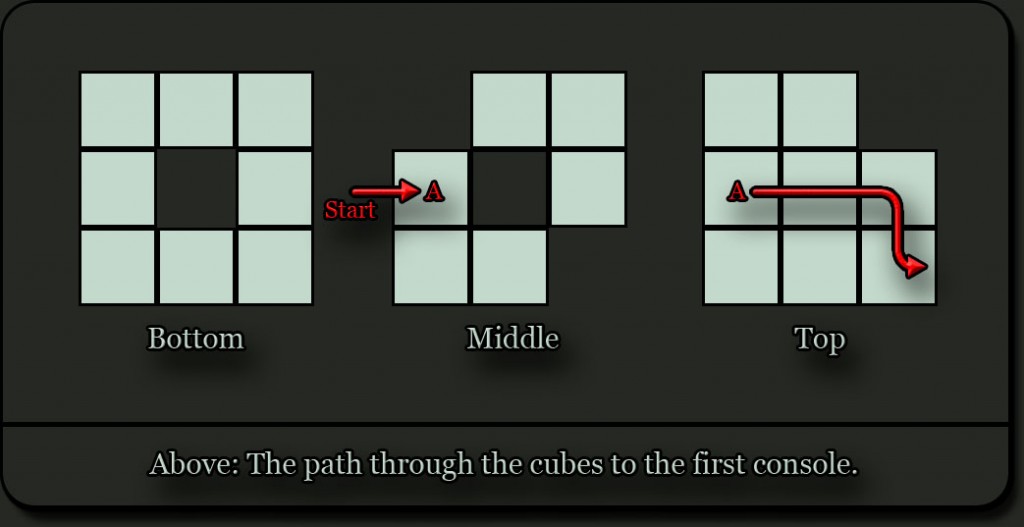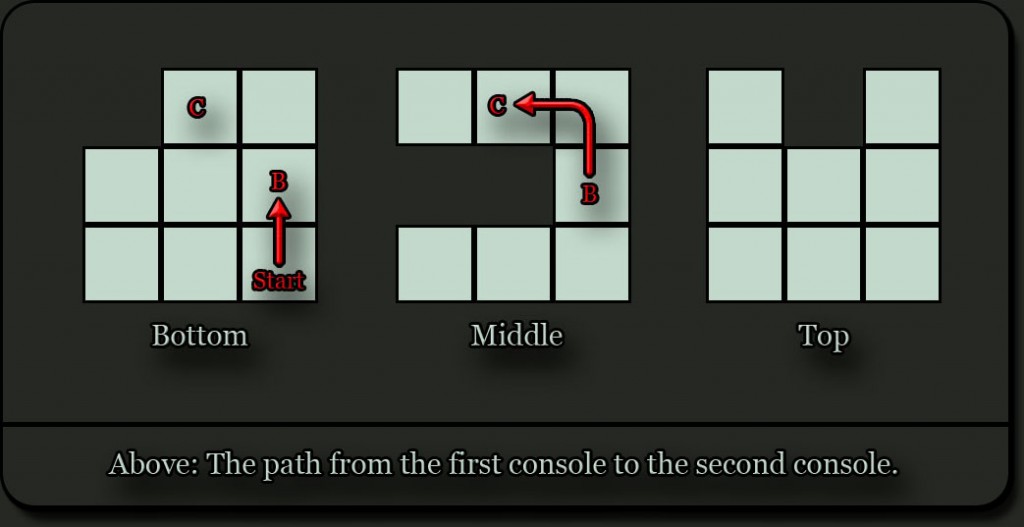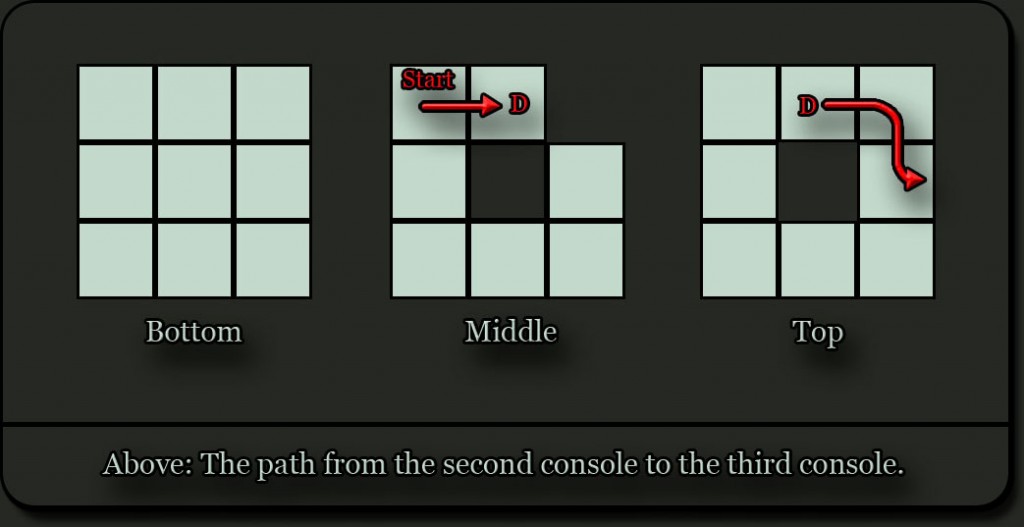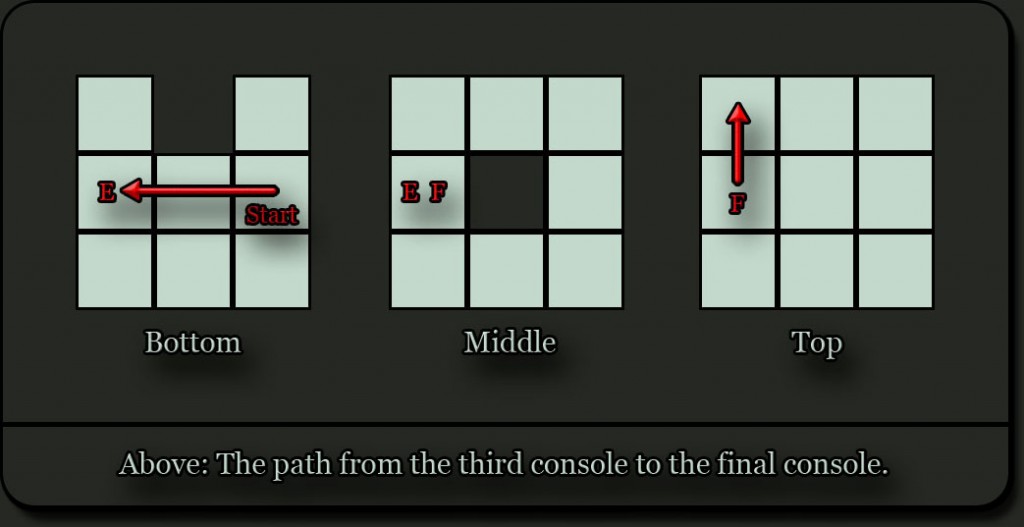
Core Containment – Details
Post Mortem
What went right:
- This project focused on the successful creation of a hovering physics vehicle. While the basic vehicle function was simple to implement, refining the controls to something that was easy for players to use took many iterations. Ultimately, I arrived at a combination of thrusters and constraints that was very easy to use.
- Most of the gameplay happens inside the matrix of cubes that resembles a Rubik’s cube. This was a very simple aesthetic to create which worked very well for the level.
- There is only one path through the cubes, which allows the player to focus on controlling the scanner rather than trying to solve a three-dimensional maze.
What went wrong:
- The initial level design had the player switching between the scanner view and Gordon’s view in the control room, with several consoles in place to manually attach new cubes to the framework. This proved cumbersome and removed in favor of always keeping the player in control of the scanner.
- The initial design also included multiple paths to each goal. This confused some players since at the time the controls for the scanner were unrefined and somewhat cumbersome.
- The level suffered from two mechanics that did not work together well: the scanner movement and the rotating cubes. Either of these mechanics alone may have made a better level than when they were combined.
What I learned:
- Always find others to test your work. I became adept at playing my own level, and having an outside perspective was useful for determining how to refine the level.
- When creating new mechanics, it is best to focus on a single mechanic rather than trying several at once.
- When working with complex systems, try to find ways to simplify them at every opportunity.
Level Breakdown
Introduction
Scanner Tunnel
First Console

Second Console

Third Console

Final Console

Manhack Attack
Additional Images